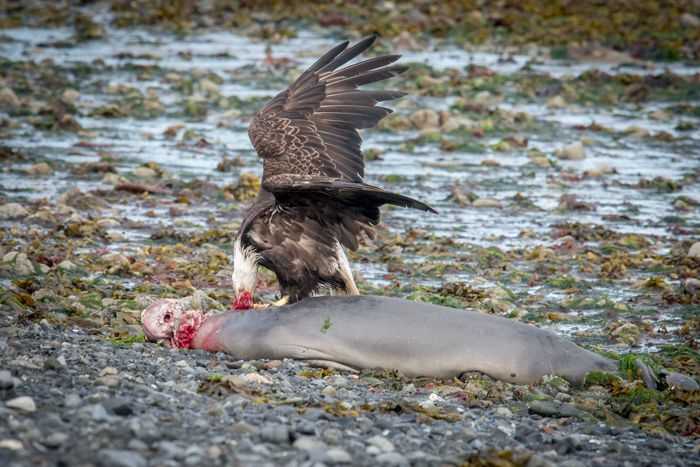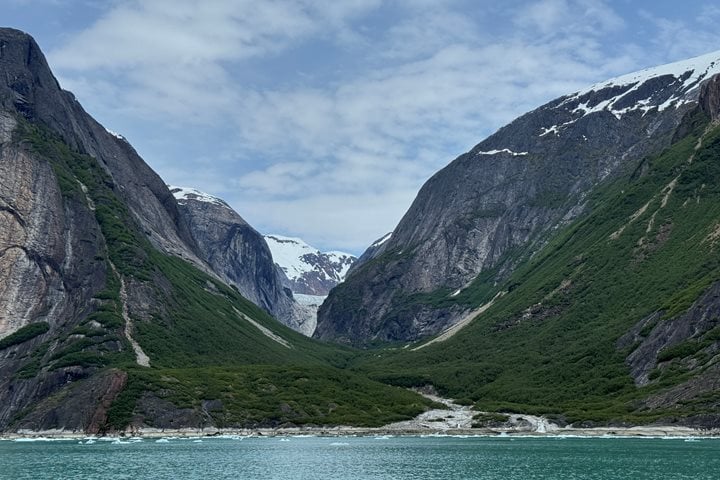After a relatively bumpy night of sailing down Lynn Canal in windy conditions, guests awoke aboard the National Geographic Sea Bird to a glassy sea surface as we cruised through Icy Strait to our first landing at Mud Bay. Mud Bay is located on the north end of Chichagof Island, part of the ABC archipelago in Southeast Alaska. The region is known for its abundance of wildlife on land, including some of the highest densities of brown bears in the world, and in the sea, where whales and other marine mammals come to feed on the cornucopia of marine life drawn to the mixing currents.
Hundreds of gulls lifted off as the first hikers arrived on shore, and a number of bald eagles surrounded what turned out to be a dead young elephant seal on the beach. After snapping some photos, those who chose the long exploratory bushwhack took off up the river to see what they could find. Sitka black-tailed deer were spotted in abundance, and tracks of the eagles, deer, and bear could be seen covering the muddy shore. Everyone got back into the forest where more evidence of bears could be seen, from game trails, to recent diggings, and fields of skunk cabbage torn up. Those on the shorter hikes got to come back to the beach and cruise the shores by kayak and stand-up paddleboard, watching wading birds, a sea otter slinking around, and humpback whales in the distance. As we rode back to the ship, the smell of chili got stronger and the rumblings in our stomachs got louder.
After a short repositioning, the ship anchored in the Inian Islands, a small cluster of islands at the entrance to the Gulf of Alaska. The distance between the mainland to the north, and the Inian Islands, which sit at a bottleneck just above Chichagof Island, is only a mile and a half. This means that a large part of the water that flows into and out of the northern fjords of Southeast Alaska have to pass through a constricted waterway, and with that water flows a diversity of animal life.
At certain places around the Inian Islands, eddies and underwater mounts push nutrient-rich water to the surface, and eagles and Steller sea lions are there waiting for fish that are powerless against the strong currents to get flushed up to the surface. Our afternoon expedition landing craft tours focused on these locations, and for an hour and a half, we watched eagles diving for fish, and sea lions bringing caught fish to the surface and thrashing them into small pieces. The last boat returning got especially lucky, and while watching a sea otter feeding on a basket star, saw a group of about eight orcas.
All the wildlife feeding may have inspired sympathetic feelings in our stomachs as we returned for dinner, a movie night for the under-21 set aboard ship, and a talk on plankton by naturalist Dan.







